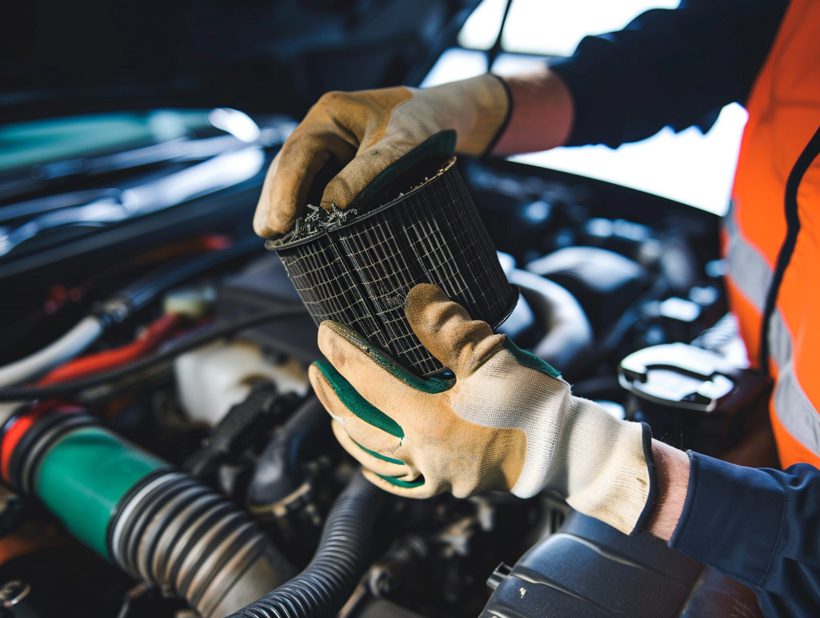Experiencing misfires or a loss of power in your ride? It’s quite possible you’re dealing with a weak spark plug or a faulty coil pack. We’re here to guide you through the process of testing a coil pack, ensuring your engine runs smoothly and efficiently.
Testing coil packs is a critical part of routine vehicle maintenance that often gets overlooked. We’ll show you how to pinpoint the problem and potentially save a trip to the mechanic. Stay tuned as we dive into the simple steps to diagnose and address weak spark plugs with confidence.
Importance of Testing Coil Packs
When we’re maintaining our vehicles, testing coil packs is a task we can’t overlook. The coil pack is an essential component in the ignition system transforming the battery’s voltage to a much higher voltage. This is necessary to create the spark that ignites the fuel-air mixture in the engine.
Why is it crucial to regularly test coil packs? First, let’s consider longevity. Coil packs can deteriorate over time due to the high voltage they manage. Without periodic testing, a failing coil pack might go unnoticed until it leads to more significant issues.
Consider these points for regular coil pack checks:
- Engine Health: A well-functioning coil pack ensures optimal engine performance. It’s responsible for a smooth ride and contributes to fuel efficiency.
- Early Detection: Regular testing helps catch problems before they worsen. This not only saves us a potential breakdown but can also reduce repair costs.
- Performance: A defective coil pack can lead to engine misfires or a noticeable loss in power. Testing helps us pinpoint these problems promptly.

Efficiency is another factor to bear in mind. A faulty coil pack forces the engine to work harder than necessary, leading to increased fuel consumption and reduced performance. By keeping a close eye on the condition of our coil packs, we’re not only safeguarding the engine but also ensuring we’re not spending more on fuel than we need to.
To sum it up, coil packs are a linchpin in our vehicle’s performance. Testing them is about being proactive rather than reactive, about catching issues early to prevent larger problems, and about optimizing our vehicle’s efficiency and power. As we progress through our guide on how to test coil packs, we’ll cover the specific signs to look for and the steps to diagnose and test your vehicle’s coil packs effectively. Through this process, we’ll ensure that our engines are running in top condition and that any weak spark plugs are found and fixed.
Signs of Weak Spark Plugs

When it comes to diagnosing vehicle performance issues, recognizing the signs of weak spark plugs can save us time and money. Weak or failing spark plugs lead to a range of engine problems that we should address promptly. Here are key indicators that might suggest our spark plugs are not performing as they should:
- Rough idling: A smooth idle is what we expect from a well-tuned engine. If our car is shaking or producing a rough and irregular engine sound, it could be a telltale sign of weak spark plug performance.
- Difficulty starting: Our cars should start swiftly. If we’re experiencing prolonged cranking times or the engine hesitates before starting, it‚Äôs worth checking the spark plugs.
- Engine misfire: One of the most common symptoms we’ll notice is engine misfire. This happens when spark plugs fail to ignite the fuel-air mixture properly, leading to an abrupt halt in the rhythm of the engine.
- Poor acceleration: If our car isn’t responding with the usual pep when we step on the gas, weakened spark plugs might be to blame. This lack of responsiveness is a critical indicator.
- Increased fuel consumption: Faulty spark plugs can significantly reduce fuel efficiency. If we’re visiting the gas station more often without a clear reason, our spark plugs could be the culprits.
- Check engine light: Modern vehicles are equipped with diagnostic systems that alert us when there’s a problem. A lit check engine light may indicate spark plug issues among other potential concerns.
Let’s keep these warning signs in mind while evaluating the performance of our vehicle. Regular monitoring and taking action when these symptoms arise help us avoid unnecessary wear and tear and keep our car running efficiently. Addressing spark plug issues promptly ensures that we dodge more significant problems down the road and maintain our engine’s longevity.
Tools Needed for Testing
Before diving into the testing process, it’s crucial to gather the right tools. Proper gear not only makes the task easier but also ensures that the results are accurate and reliable. Here’s what you’ll need:
- Digital Multimeter: Essential for measuring resistance and voltage.
- Ignition Coil Tester: A specialized tool for checking the performance of the coil pack.
- Spark Plug Gap Tool: Useful for verifying the correct gap of the spark plugs.
- Safety Glasses: Protects your eyes from any accidental sparks or debris.
Equipped with these tools, we’re ready to assess the health of the coil packs. Remember, working on vehicle systems can be hazardous, so always prioritize safety. Make sure you’re in a well-ventilated area and follow the specific instructions for each tool.
Testing With a Digital Multimeter
Here’s a step-by-step guide:
- Set the multimeter to the ohms setting to measure resistance.
- Locate the coil pack and remove the electrical connector and spark plug wire.
- Place one multimeter lead on each terminal of the coil pack and note the reading.
The resistance specifications can vary depending on the vehicle make and model, so always refer to the manufacturer’s guidelines. Typically, a healthy coil pack will display a resistance within the range specified in the vehicle’s service manual.
Ensuring The Right Spark Plug Gap

Using the spark plug gap tool, check if the gap between the ground electrode and the central electrode matches the required specifications. An improperly gapped spark plug can cause misfires and poor engine performance, emphasizing the significance of this simple check in the overall testing process.
With the multimeter test completed and the spark plug gap confirmed, we can proceed to evaluate the performance of the coil pack further. Understanding the intricacies of each step is vital in diagnosing and rectifying any issues with weak spark plugs, ensuring our engines run smoothly and efficiently.
Step 1: Preparing the Vehicle for Testing
Before we dive into the technical process of testing a coil pack, it’s essential that we properly prepare our vehicle for the task at hand. A methodical setup paves the way for accurate results and ensures we conduct our tests safely.
Secure the Vehicle
- Park the vehicle on a flat surface and apply the parking brake; this prevents any unintended movement.
- If our testing involves running the engine, ensure the area is well-ventilated to avoid the build-up of exhaust fumes.
Cool Down the Engine
Working on a hot engine can lead to burns and other injuries. We advise:
- Waiting for the engine to cool down before starting any work, giving us a safe working environment.
- Disabling the fuel pump and ignition system to prevent the engine from starting during our testing. This can usually be done by removing the respective fuses.
Access the Coil Packs
Since ignition coils are often concealed beneath covers or other components, we need to:
- Locate the coil packs by consulting the vehicle’s service manual for the proper procedures.
- Remove any obstructing components or covers carefully, placing any removed fasteners in a tray to avoid losing them.
Inspect and Clean
Before testing:
- Visually inspect the coil packs for any signs of damage like cracks, burns, or corrosion.
- Clean the coil area from debris and dirt to ensure our testing is not compromised by external factors.
Armed with this essential preliminary knowledge and by strictly adhering to the safety steps outlined above, we’re now ready to proceed with testing the coil pack. The goal is to establish a reliable diagnosis of our vehicle‚Äôs performance, and with these precautions in place, we ensure not just successful testing but also our safety throughout the procedure.
Step 2: Accessing the Coil Pack and Spark Plugs
Once we’ve taken the necessary safety precautions and prepared the vehicle, the next step is to access the coil pack and spark plugs. Many modern vehicles house the coil pack on top of the engine, possibly under a protective cover. We’ll need to remove this cover usually by unbolting or unclipping it.
It‚Äôs essential to calmly approach this step as precision is key. Here’s what we usually do:
- Locate the coil pack: Refer to the vehicle’s service manual to find the exact location of the coil pack.
- Remove any obstructions: In some cases, components like the air filter housing or intake manifold might be in the way. We’ll remove these carefully, ensuring not to damage any parts.
- Disconnect the electrical connector: Before removing the coil pack, we’ll disconnect the electrical connector. It‚Äôs important to do this gently to avoid breaking the clip.

Once we’ve exposed the coil pack, we’ll locate the spark plugs. They’re typically seated within the cylinder head and connected by high tension leads from the coil pack, or the coil might sit directly on top of the plug in coil-on-plug setups. Handling the spark plugs with care is critical, as they are delicate components:
- Gently detach the coil pack from the spark plug: If it‚Äôs a coil-on-plug arrangement, we’ll remove the coil directly off the plug.
- Inspect the area around the spark plug: Any debris around the plug can fall into the cylinder when the plug is removed‚Äîsomething we’re always careful to avoid.
Accessing the coil pack and spark plugs can be somewhat intricate, but with patience and careful attention to detail, it’s more than manageable. Remember, these components are integral to the vehicle’s ignition system, so it’s crucial to handle them with the utmost care. Once they’re fully accessible, we’re ready to move on to testing.
Step 3: Performing a Visual Inspection
Once we’ve successfully accessed the coil pack and spark plugs, visual inspection is the next critical step. Begin by examining the coil pack itself. Look for any signs of damage, such as cracks or burn marks, which can be indicative of an electrical issue. At this stage, we’re checking for anything that might compromise the coil pack’s integrity.
Here’s what we should be attentive to:
- Burn marks or melting on the coil pack housing
- Corrosion on the connectors or terminals
- Signs of arcing on the coil boot
- Cracks or damage on the coil pack
Next, we’ll turn our attention to the spark plugs. These are as crucial as the coil pack since they directly affect engine performance. When inspecting the spark plugs, look for the following:
- Discoloration or soot buildup which may suggest a rich fuel mixture
- Oily residue could imply oil leakage into the combustion chamber
- Electrode wear, which can lead to misfires or poor engine performance
Don’t forget to inspect the area around the spark plugs and coil packs. Ensure there’s no debris or moisture, as these can cause electrical shorts and disrupt the spark’s pathway.
If everything seems in order in sight: no apparent damage, no wear and tear out of the ordinary, it’s time to advance to the next step. Testing the coil pack for proper functionality involves both primary and secondary resistance measurements with a multimeter. By meticulously following the manufacturer’s specifications, accurate diagnostic results are within reach.
Make a note of any anomalies found during the inspection before moving forward. Any abnormalities could be crucial to identifying the root cause if a fault is detected later during the resistance testing. It’s these small details that can make a significant difference in troubleshooting potential issues with our vehicle’s ignition system.
Step 4: Using a Multimeter to Test the Coil Pack
Once we’ve completed the visual inspection, it’s time to use a multimeter to test the coil pack‚Äôs resistance. A multimeter is an electronic measuring instrument that combines several measurement functions in one unit. For our purposes, we’ll need a digital multimeter with an ohmmeter setting to measure electrical resistance.
Before we begin, ensure the vehicle’s ignition is off and the key is removed. Safety is paramount whenever we’re dealing with a vehicle’s electrical system.
Here’s how we can test the coil pack with a multimeter:
- Set the multimeter to the ohmmeter setting.
- Place one lead of the multimeter on each of the coil pack’s terminals.
- Record the resistance value shown by the multimeter.

The acceptable range of resistance values can vary depending on the vehicle’s make and model. Typically, we’re looking for a resistance between 0.4 and 2 ohms for the primary winding and between 6,000 to 10,000 ohms for the secondary winding. Consult the vehicle’s repair manual or manufacturer’s specifications for the exact range.
Here are some resistance values to guide us:
| Coil Pack Type | Primary Winding (ohms) | Secondary Winding (ohms) |
|---|---|---|
| Standard | 0.4 – 2 | 6,000 – 10,000 |
| High-performance | 0.2 – 0.5 | 8,000 – 15,000 |
If the readings fall outside the specified range, it indicates a problem with the coil pack, and it may need replacing.
We should also test for continuity to the ground by touching one probe to the coil’s terminal and the other to the coil pack’s casing. There should be no continuity; if the multimeter indicates otherwise, the coil pack could be experiencing an internal short.
By now, we’ve covered quite a bit of ground. We started with spotting signs of trouble and progressed through accessing the coil pack, performing a visual inspection, and now testing with a multimeter for resistance and continuity. Each step in this process brings us closer to identifying weak or faulty spark plugs, ensuring we can maintain our vehicle’s optimal performance and prolong the service life of its engine.
Step 5: Testing the Spark Plugs
After ensuring the coil pack’s integrity through resistance measurements, we’re now on to evaluating the spark plugs themselves. Spark plugs are critical to your vehicle’s ignition system, and faulty ones can lead to a host of engine issues.
Firstly, remove the spark plug using a spark plug socket. We recommend wearing safety gloves to protect your hands during this process. Inspect the spark plug for any obvious signs of wear or damage, like:
- Cracks or chips in the ceramic insulator
- Burned electrodes
- Heavy carbon deposits
If they appear heavily worn or damaged, it’s time for them to be replaced. However, the absence of visible damage doesn’t necessarily mean they’re functioning optimally.
To test a spark plug’s performance, we can use a spark plug tester, which will show if a sufficient spark is being produced. Attach the tester to the spark plug and ground it to the engine. Ensure you follow the spark plug tester manufacturer’s instructions for the best results.
Here’s what to consider while using the tester:
- Intensity of the Spark: A strong, blue spark is indicative of good condition.
- Consistency of the Spark: The spark should occur at regular intervals, with no erratic behavior.
For a more accurate assessment, we can measure the spark plug gap using a gap gauge. The correct gap specification is vital for proper ignition and can be found in the vehicle’s repair manual. The required gap for most spark plugs ranges from 0.028 to 0.060 inches. If the gap deviates from the specified range, adjust it carefully using a gap tool.
Let’s glance at the standard spark gap measurements:
| Vehicle Type | Standard Gap Measurement |
|---|---|
| Compact Car | 0.028 – 0.040 inches |
| Sedan | 0.035 – 0.050 inches |
| SUV/Truck | 0.040 – 0.060 inches |
Always double-check these values with your repair manual, as manufacturers might recommend different gaps for different engine models or types.
Remember, meticulous attention to spark plug condition and performance is a vital aspect of maintaining a robust ignition system. It ensures each cylinder is fired efficiently, promoting a smoother and more powerful engine operation.
Conclusion
We’ve walked through the essentials of diagnosing and testing your coil pack and spark plugs to ensure your vehicle’s ignition system remains powerful and reliable. Remember, regular checks on your spark plugs and coil pack not only prevent performance issues but also save you from potential costly repairs down the road. Trust your instincts‚ if something doesn’t seem right, it’s worth taking the time to investigate further. Armed with the right tools and knowledge, we’re confident you’ll keep your engine running smoothly for miles to come. Keep up with maintenance, and your car will thank you with every efficient, smooth start.
